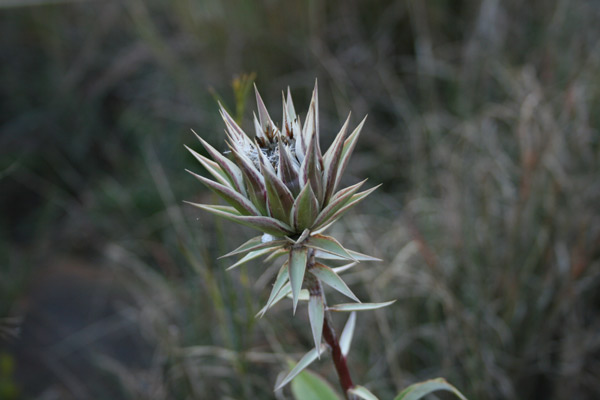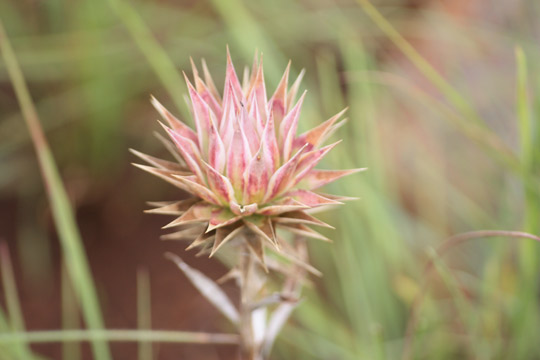|
Botanical name |
Dicoma zeyheri |
|
Other names |
Toy sugarbush; doll's protea; jakkalsbos (Afrikaans); distel (Afrikaans) |
|
Family |
Asteraceae |
|
Dimensions |
Erect, perennial shrublet of up to 40 cm in height with a sturdy rootstock |
|
Description of stem |
Light grey, erect |
|
Description of leaves |
Opposite to sub-opposite, oblanceolate, green above, whitish below; tapering to pointed apex; entire margins; sessile |
|
Description of flowers |
Single, cup-shaped composite flowers with conspicuous, multiple and stacked sharp-pointed calyx leaflets or sepals; the surface of disc-florets has a purply dark and soft textured appearance; appear from late spring through autumn and even into winter |
|
Description of seed/fruit |
|
|
Description of roots |
|
|
Variation |
D. zeyheri subsp. argyrophylla is a Kwazulu-Natal variant; there are 35 Dicoma species worldwide (including in India) with 18 species occurring in southern Africa |
|
Propagation and cultivation |
|
|
Tolerances |
|
|
Uses |
Roots are used in treatment of stomach disorders; also used in treating livestock |
|
Ecological rarity |
|
|
Pests and diseases |
|
|
Other |
It may have invasive tendencies in certain agricultural areas and is mentioned as a weed in the Global Compendium of Weeds; |
|
Location |
Grassland, open bushy areas |
|
Distribution (SA provinces) |
Gauteng; North West; Mpumalanga; KZN |
|
Country |
South Africa; Swaziland |

